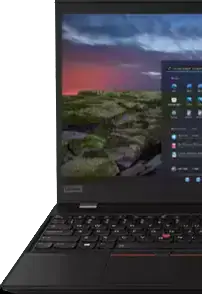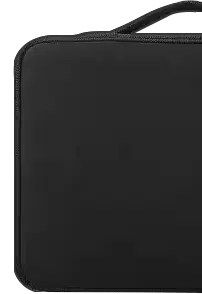How to connect a printer to a computer for Windows?
Setting up a printer often seems daunting, but it doesn't have to be. If you're using a Windows computer, this guide will walk you through connecting your printer seamlessly to ensure quick and efficient printing.
Automatic Setup:
- Connect your printer to the computer via USB or WiFi.
- Head to your computer's Settings.
- Navigate to Devices, then choose Printers & Scanners.
- Click on Add a device; your system should automatically detect and install the printer.
Manual Setup:
If the automatic setup doesn't work:
- Follow the steps until selecting Printers & Scanners.
- Click on The printer that I want isn’t listed.
- Choose to add a printer manually by providing information like IP address and selecting the appropriate driver.
Customizing Configuration:
- Assign the printer as the default, if necessary.
- Explore options for sharing the printer on a local network.
- Adjust printer preferences for optimal printing quality.
- Handle security settings as per your needs.
- Run a test print to ensure everything is functioning correctly.
Connecting to your printer doesn’t need to be a headache, and with these straightforward steps, you’ll be ready to print in no time.
How do I fix printer offline errors?
Experiencing a printer that refuses to connect can be frustrating. Let's walk through a few steps to get your printer back online seamlessly.
Inspect Physical Connections
First things first, ensure all cables are securely plugged in. Check both the power cord and the USB cable (if applicable) to the computer. For wireless setups, confirm your device is connected to the correct WiFi network.
Restart Devices
A simple restart can often solve the problem:
- Turn off the printer and unplug it. Wait a few seconds, plug it back in, and power it on.
- Reboot your computer. This helps refresh the connection and resolve temporary glitches.
Check Printer Status
Go to your computer's printer settings:
- Set the printer online. Ensure the printer isn't set to "Use Printer Offline."
- Verify as default. Make sure the correct printer is set as the default device.
Clear the Print Queue
Clearing the spooler can address stuck documents:
- Open the print queue, cancel any pending documents, and try printing again.
- For more effectiveness, manually clear the spooler through system settings.
Verify Network Connectivity
For network printers, make sure:
- Network settings are correct. Reconfirm your printer is connected to the same network as your computer.
- Router functionality. Restart your router if you suspect network issues.
Reinstall the Printer
If issues persist, reinstalling might be the key:
- Remove the printer. Go to your settings and delete it from the list of devices.
- Add it back. Use "Add Printer" to rediscover and reinstall it.
By following these steps, you'll typically find your way to a functioning printer without much hassle. If these methods don't work, consulting your printer's manual or online troubleshooting specific to your model may provide additional solutions.
Why might a wireless printer not stay connected?
Dealing with a wireless printer that constantly loses its connection can be frustrating. Here's a comprehensive look at potential reasons and solutions to keep your printer online and ready to print.
Weak WiFi Signal
A common culprit is a weak WiFi signal. If your printer is too far from the router, the connection can become unstable. Here's what you can do:
- Reposition Your Printer:Move it closer to the router to improve signal strength.
- Router Placement:Ensure your router isn't obstructed by walls or objects that can weaken the signal.
Printer Sleep Mode
Some printers have a power-saving mode that might disconnect WiFi. To check:
- Adjust Power Settings:Enter the printer’s settings menu and disable or tweak sleep mode so it stays connected.
Network Changes
Changes to your network, like a new password or settings, can affect your printer's connection. Consider:
- Reconnect the Printer:Update your printer with the new WiFi credentials.
- Network Reset:Sometimes resetting your network devices helps in re-establishing connections.
Interference from Other Devices
Wireless networks can be disrupted by other devices. To mitigate:
- Limit Interference:Keep your printer away from microwaves, cordless phones, and other electronics.
- Channel Adjustment:Use your router's settings to switch to a less congested WiFi channel.
Firmware and Driver Issues
Outdated software can cause connectivity problems. Regular updates ensure compatibility and stability:
- Update Firmware:Check the printer manufacturer’s site or your printer's settings for updates.
- Driver Updates:Make sure you have the latest drivers installed on your computer.
Dynamic IP Address Changes
If your printer is assigned a new IP address frequently, it may struggle to stay connected. You can:
- Assign a Static IP:This ensures your printer always uses the same IP address, stabilizing the connection.
By addressing these potential issues, your wireless printer should maintain a more reliable connection. With a few adjustments, you’ll save time and avoid frustration in the future.
How to connect a printer using WiFi Protected Setup (WPS)?
Connecting your printer via WPS is a straightforward process that saves time and skips lengthy setups. Here's how you can effortlessly link your printer to your network:
- Check Compatibility:Ensure both your printer and router support WPS. Look for the WPS button or entry in the manual.
- Position the Devices:Place your printer close to the router to ensure a strong connection.
- Activate WPS on the Router:Press the WPS button on your router. This usually triggers WPS mode, allowing other devices to connect within a specific timeframe (usually two minutes).
- Enable WPS on the Printer:Access the printer’s control panel menu. Navigate to the wireless settings and initiate the WPS mode.
- Establish the Connection:Your printer should automatically connect to the network. Look for a confirmation message or a solid wireless light on your printer.
- Test the Connection:Print a network configuration page if your printer offers this feature. This test ensures the connection is successful.
By following these simple steps, you can set up your printer quickly and efficiently, so you can get back to what matters most. Remember, if you run into any issues, refer to your printer's manual for model-specific instructions.
How can I share a printer with other computers?
Sharing a printer involves a few straightforward steps to ensure seamless access from multiple devices on the same network. Here's a clear guide to get you set up:
Check Network Connection
Ensure that all computers you want to share the printer with are connected to the same local network. This can be through WiFi or ethernet.
Enable Printer Sharing on Your Computer
- Navigate to the Control Panel.
- Select Devices and Printers.
- Right-click on the printer you wish to share and select Printer Properties.
- Go to the Sharing tab and check the box labeled Share this printer.
Set Permissions
Configure any necessary permissions to ensure that other users on the network have access to the shared printer. This might involve setting up user accounts or ensuring the network is set to private.
Connect to the Shared Printer from Other Computers
On the secondary computers, add the shared printer. Typically, you'll go through the Add Printer function in the respective device settings and select the shared printer from the list of available devices.
Test the Connection
Print a test page from another computer on the network to verify that the printer sharing is functioning correctly.
Troubleshoot if Necessary
If there are connection issues, check firewall settings and ensure that all devices are updated. Also, ensure no network restrictions are preventing access.
By following these steps, you should be able to seamlessly share your printer across various computers in your network, enhancing productivity and convenience.
How to install a printer on a wired network?
Setting up a printer on a wired network is a straightforward process that enhances the convenience and accessibility of your printing tasks. Follow this comprehensive guide to seamlessly integrate your printer into your network, ensuring reliable and efficient operations for all connected devices.
Before starting the installation, ensure that you have the following items on hand:
- An ethernet cable
- Access to your network router or ethernet switch
- A printer compatible with wired network connections
- A computer or device for the initial setup
Connect Your Printer
- Position your printer:Place your printer near an ethernet port connected to your network.
- Connect the ethernet cable:Plug one end of the ethernet cable into the printer’s ethernet port and the other end into an available port on the router or switch.
Configure Network Settings
- Power on the printer:Once connected, turn on the printer and allow it to boot up completely.
- Access printer settings:Use the printer’s control panel to navigate to the network settings menu. This may involve browsing to a ‘Setup’ or ‘Network’ section, depending on your printer model.
- Select wired network: Confirm that the printer is set to connect via a wired network. This option might be labeled as ‘ethernet,’ ‘Wired LAN,’ or ‘Network Setup.’
- Assign an IP address:Typically, your network will assign an IP address to the printer automatically through DHCP. However, for a more stable connection, consider setting a static IP directly within the printer’s settings.
Install Printer Software
- Visit the manufacturer’s website:Navigate to the official website of your printer’s manufacturer to download the latest drivers and software.
- Run the installation software:Follow the on-screen instructions to install the printer software on your computer. Ensure that it detects and correctly configures your printer on the network.
- Test the connection:Print a test page to confirm that your printer is correctly configured and communicating with your network.
Troubleshooting Tips
- If your printer isn’t detected, verify that the ethernet cable is securely connected and that the router or switch is powered on.
- Check for any firmware updates for your printer.
- Review network settings to ensure that the correct network is selected.
By following these steps, you'll have your printer ready for reliable, convenient printing across all your connected devices.
How can I connect a printer without installing software?
Connecting a printer to your computer without installing additional software is often simpler than it sounds. Follow these steps to achieve a seamless connection:
Use a USB Connection:
- Plug-In and Play:Most contemporary printers are equipped with USB plug-and-play capabilities. Simply connect your printer to the computer using a USB cable.
- Automatic Recognition:Your computer should recognize the device and may automatically configure it for use without requiring additional software.
Utilize Built-In Drivers:
Many operating systems come with built-in drivers for common printer models. Once the hardware is connected, the operating system might automatically identify and use these built-in drivers to establish a connection.
Check Network Printer Options:
If your printer supports WiFi, you can connect it to your network. Your computer should be able to detect and add the printer through the network settings, using pre-installed network drivers available in most systems.
By leveraging these techniques, you can connect your printer efficiently without needing to manually install any software. This approach is particularly useful for straightforward printing tasks.
What additional equipment is necessary for wireless printer connections?
Setting up a wireless printer involves more than just the printer itself. To ensure seamless connectivity, here's what you need:
- Stable Wireless Network:An active and reliable WiFi network is essential.
- SSID and Password:You should know your network's name and have the correct password to connect.
- Compatible Router:While not always necessary, a router with features like WPS (WiFi Protected Setup) can simplify the connection process.
- Device for Setup:Often, a smartphone, tablet, or computer is required to initiate the wireless connection.
- Optimal Printer Placement:Ensure your printer is within a strong WiFi signal range to maintain a consistent connection.
These elements collectively streamline the wireless printing process, guaranteeing you can print effortlessly from any connected device.
How do I set up a print server for network environments?
Setting up a print server is crucial for seamless printing operations across a network. Follow these steps to ensure a successful setup.
Configure the Server
Begin by installing the necessary print services software on your server. Depending on your operating system, there are various third-party tools available to facilitate this process.
- Install and Configure:Deploy the print services. Set up all required print queues to help organize and manage printing jobs.
- Enable Monitoring and Logging:Ensure you have monitoring systems in place to track activities. Activate logging features to keep records of all print jobs for future analysis and troubleshooting.
- Backup Configuration:Implement a robust backup system to protect against data loss. Regular backups should be scheduled for maximum security.
Set Up Client Connections
Once your server is ready, focus on client-side configurations.
- Connect Devices:Allow devices on the network to connect with the print server. Ensure that shared printers are recognized and accessible by all necessary clients.
- Install Necessary Drivers:Make sure that the correct printer drivers are installed on each client device to prevent compatibility issues.
- Establish Defaults and Authentication:Set default printer preferences and create user authentication protocols to maintain secure access.
- Test the Setup:Conduct print tests from various client devices to ensure that everything is functioning as expected.
Implement Management Features
Proper management enhances efficiency and control over your print environment.
- Usage Monitoring and Quota Setting:Monitor the print usage across your network to maintain oversight. Implement quotas to manage resource allocation and prevent unnecessary paper and ink consumption.
- Alert Configuration:Set up alerts to notify administrators of issues like low toner levels or connection problems.
- Permission Management:Adjust user permissions to control who can access which printers and perform specific operations.
- Report Generation:Regularly generate reports to analyze print trends and plan for future needs or upgrades.
By following these detailed steps, you can ensure a robust and efficient print server setup that meets the needs of your network environment. This will facilitate streamlined printing operations while safeguarding security and resource management.
What are the professional printer setup options?
When you're setting up a professional printer, there are several methods to consider, each with its unique steps and benefits. Here's a detailed guide:
App-Assisted Setup
- Download the Printer's App:Most modern printers come with a dedicated mobile application. Start by downloading it on your smartphone or tablet.
- Create an Account:Sign up or log into an existing account within the app to access advanced features and support.
- Add Your Printer:Use the app to connect with and add your new printer to your list of devices.
- Guided Installation:Follow the in-app instructions for a seamless setup, which includes network configurations and other preferences.
- Customize Settings:Tailor your printer's settings according to your specific needs, directly from the app.
Manual Setup
- System's Built-in Printer Features: On your computer, navigate to the printer settings to add a new device manually.
- Install Necessary Drivers:Download and install appropriate drivers from trusted third-party sources or the printer's support website to ensure compatibility.
- Customize the Software:Access and adjust printer software settings to fine-tune features like duplex printing and paper type.
- Activate Printer Functions:Enable additional capabilities that come with your printer, such as double-sided printing or multiple paper trays.
- Connectivity Test:Once everything's set up, perform a test print to confirm the connection and functionality are working perfectly.
Advanced Configuration
- Set Up Mobile Printing:Configure options such as mobile or cloud printing services to print documents from anywhere.
- Register for Ink Subscription Services:Depending on your needs, consider setting up a subscription service to ensure you never run out of ink or toner.
- Enable Online Services:Activate and configure web-based services for more convenience and access to updates.
- Scanning Options:Adjust scanning settings for tasks like document sharing and archiving.
- Security Configuration:Protect your device by setting up firewalls, passwords, and other security measures.
Choosing the right setup option depends on your technical comfort level and specific printing requirements. By following these steps, you'll maximize your printer's potential while ensuring it suits your professional needs.
What are the distance considerations for printer connections?
Connecting your printer effectively requires thoughtful consideration of various distance factors to ensure seamless operation and maintenance. Here's what to keep in mind:
- USB Connection Range:For USB connections, it's crucial that your printer is positioned within the cable length limit. Generally, this is about 5 meters or around 16 feet without using an extender. Longer distances could lead to signal loss or data transmission issues.
- Wireless Connection Reach:When connecting via WiFi, ensure your printer is within the effective range of your wireless network. Walls, floors, and other obstacles can affect signal strength, so ideally, the printer should be located in a central spot that's well-covered by your network.
- Maintenance Accessibility:Make sure the printer is easily accessible for routine maintenance tasks. This includes having enough space around the printer to clean, refill paper, or replace cartridges without difficulty.
- Paper Feed and Output Path:Keep the path clear for both paper feed and output. This means avoiding clutter or obstructions that could interfere with paper entering or exiting the printer efficiently.
Properly evaluating and arranging these factors will help ensure your printer operates smoothly and is easy to manage, no matter the connection type you're using.
How to manage a printer's internet connection?
Ensuring a seamless internet connection for your printer is crucial for efficient operation. Here’s how you can manage it effectively:
Connect to the Network
Begin by connecting your printer to your WiFi network. Most modern printers come with built-in wireless capabilities. Access the printer’s menu, navigate to the network settings, and select your WiFi network. Enter the password when prompted. For ethernet-ready printers, use an ethernet cable to connect to your router directly.
Update Printer Firmware
Keeping your printer’s firmware up to date ensures compatibility with the latest web services. Visit the manufacturer’s website to download the latest updates or use the printer’s automatic update feature if available.
Configure Web Services
Many printers support web-based printing services like Google Cloud Print or third-party apps. These services often require registration or linking your printer with an online account. Find these settings within the printer’s menu and follow the on-screen instructions.
Troubleshoot Connection Issues
If your printer isn’t connecting, verify the network details. Double-check the WiFi password and ensure the router is working properly. Restart both the printer and the router to refresh the connection. If issues persist, consult the printer’s manual or support site for troubleshooting steps.
Security Settings
Protect your printer from unauthorized access by updating its security settings. Change the default password to a strong, unique one and enable any encryption features available. Regularly review access logs if your printer supports them.
By following these streamlined steps, you can maintain a reliable internet connection for your printer, enabling hassle-free printing and access to advanced features.
How to retrieve network password or PIN for printer connection?
Connecting your printer to a network often requires specific credentials. Here’s how you can locate them:
- Check Your Router:Most routers have a label with the default Network Name (SSID) and Password printed on the side or bottom. If you haven't changed these details, they should be accessible there.
- Router Settings:If you’ve customized your WiFi settings in the past, log into your router's web interface:
- Open a web browser and type your router's IP address (often found in its manual).
- Log in using the admin credentials. You might be prompted for a username and password like "admin" or "password".
- Navigate to the "Wireless" or "WiFi" section to view your network credentials.
Use Your Computer:
Go to the "Network & Internet" settings in the Control Panel. Under "Status," click on "Network and Sharing Center." Select your network name, then "Wireless Properties." In the “Security” tab, you can view your password by selecting "Show characters."
Check Your Device Manual:Some printers come with a printed network configuration page detailing the required credentials. Refer to the user guide for instructions on how to print this page.
Contact Your Internet Service Provider (ISP):If you have trouble retrieving your network details, contacting your ISP may provide assistance with resetting or locating your password.
By following these steps, you should be able to find the necessary network information for connecting your printer efficiently.
How to set up a network printer for office or shared use?
Setting up a network printer for an office environment or shared use can be simple if you follow these structured steps. Let’s dive into the process.
- Infrastructure Setup
- ethernet Network:Ensure there's a readily available ethernet network for connectivity.
- Network Configuration:Have a DHCP server in place to assign IP addresses automatically; plan to use static IPs for added stability.
- Printer Policies and Resources: Put network printer policies in place and ensure adequate bandwidth is available.
- Print Server Consideration:Decide if a print server is necessary for managing network print jobs more efficiently.
- Establish Physical Connections
- Network Integration:Connect your printer to the network using an ethernet cable.
- Connection Verification:Check that the link indicator lights are active to confirm connectivity.
- IP Address:Confirm that the printer obtains an IP address, either through DHCP or by setting a static IP.
- Location Documentation:Record the printer’s network location for easy future reference.
- Test Connectivity:Ensure the printer is communicating with the network correctly by performing a basic connectivity test.
- Configure the Printer
- IP Settings:If stability is crucial, assign the printer a static IP address instead of relying on DHCP.
- Network Protocols:Configure necessary network protocols such as IPv4 or IPv6.
- Security Considerations:Set security features to protect the device from unauthorized access, including network encryption.
- Printer Sharing:Enable sharing settings so that the printer can be accessed by multiple users.
- Access Management:Set up permissions and controls to manage who can use the printer and how they can access it.
First, ensure that your network infrastructure is prepared to accommodate a network printer:
Moving onto the hardware side of things:
Now, configure your network printer settings:
By carefully following each of these steps, you’ll have your network printer set up efficiently for any office environment or shared use. With a reliable printer setup, you can improve productivity and streamline document management within your workspace.
How to troubleshoot common printer connection issues?
Printer issues can be caused by many different things, but thankfully there are some simple troubleshooting steps you can take to get it back up and running again. Start by checking if all cables are securely connected and that both the printer and computer are powered on—if they aren't, turn them on. Next, make sure that no other devices are obstructing the connection between them, then try resetting the printer by following its manual instructions. If none of those steps work, try using a different driver or reinstalling any drivers that may exist for your printer's model.
To tackle specific connection issues, consider these targeted strategies:
USB Connection Problems
- Check the Cable Condition:Ensure the USB cable is not damaged or frayed.
- Try Different USB Ports: Sometimes a different port can solve the issue.
- Update USB Drivers:Keep your drivers up-to-date to avoid compatibility issues.
- Device Manager Inspection:Check for any USB device errors in the device manager.
- Reset the USB Controller:This can resolve any lingering connection errors.
Wireless Connection Issues
- Verify Signal Strength:Ensure your printer is within range of the wireless router.
- Check Network Status:Confirm that your network is functioning properly.
- Reset Wireless Settings:Sometimes a fresh start can clear up connectivity problems.
- Update Firmware:Outdated firmware can hinder wireless connections.
- Check Security Settings:Ensure that network security settings are not blocking the printer.
Network Connection Problems
- Verify IP Configuration:Make sure the printer's IP address is correctly configured.
- Check Network Cables:Inspect for any loose or damaged cables.
- Test Network Access:Run a quick test to ensure the printer can access the network.
- Review Firewall Settings:Firewalls can sometimes block printer access.
- Check DNS Resolution:Ensure that DNS settings are allowing proper communication.
By following these comprehensive steps, you can effectively address and resolve common printer connection issues. Whether it's a simple cable check or a deeper dive into network settings, tackling the problem step-by-step will get you back on track in no time.
How can I address driver conflicts that affect printer performance?
Start by identifying and removing any conflicting software that may interfere with the printer driver. Perform a clean installation of the driver, update your Windows operating system, and examine error logs for specific issues. Additionally, resetting the print spooler can help resolve conflicts.
What are some general steps for resolving driver installation failures?
Begin by removing any outdated drivers from your system. If installation issues persist, use compatibility mode and run the installation as an administrator. Check for any pending Windows updates and verify the system meets the necessary requirements for the driver.
How do you enable mobile printing from devices?
Most newer printers come with wireless capabilities so they can be connected to mobile devices like phones or tablets. To do this, first make sure that the printer is set up for wireless printing through its setup menu. You'll then need to connect it to your device either by Bluetooth® or WiFi - once connected, you'll be able to quickly print out documents right from your phone or tablet!
To ensure a seamless experience, consider the following steps:
App Installation
- Download a compatible app like a printer manufacturer’s app or a third-party mobile printing app.
- Configure the app settings according to your preferences.
- Connect the app to your printer.
- Test the printing function to ensure everything is set up correctly.
Cloud Services
- Set up cloud printing to print from anywhere.
- Configure email printing for direct email-to-printer functionality.
- Enable remote access to allow printing even when you're away from home.
- Set security options to protect your documents and connections.
- Test the cloud printing functionality to verify everything is working as expected.
Direct Printing
- Enable WiFi Direct for a direct connection to your printer without a network.
- Configure Bluetooth® if your printer supports it for easy pairing with your device.
- Set up NFC (Near Field Communication) for a quick tap-to-print option.
- Test all connections to ensure they are stable and secure.
By following these steps, you'll enhance your mobile printing setup, making it versatile and reliable across various devices and methods.
How can I test if my mobile printing setup is working correctly?
Testing your mobile printing setup involves sending a test document from your mobile device to the printer. Check that the document prints clearly and that all features, like cloud and direct printing, are functioning as expected. Adjust settings as needed based on the test results.
What are the basic requirements for a printer setup?
Connecting a printer to your computer is quite simple. First, make sure the printer is powered on and the USB cable is plugged into both the printer and the computer's USB port. Then follow the instructions that came with your printer—most newer models have software that walks you through the setup process.
Before you begin, ensure you have everything you need for a smooth installation:
- Printer and Computer:Both devices are essential for setting up your printer.
- Power Cable and Outlet Access:Make sure your printer is connected to a power source to function correctly.
- Printer Documentation and Drivers:These materials are important for guiding the setup and can help in troubleshooting any issues.
- Administrator Access:You'll need this level of access on your computer to install necessary drivers and make system changes.
- Stable Work Surface:Position your printer on a stable surface near your computer to prevent any accidental disconnections or falls during use.
By preparing these elements in advance, you can ensure a seamless setup process, allowing you to print efficiently and effectively from the get-go.
How can I change the ink cartridges on my printer?
Changing the ink cartridges may vary depending on the printer model, but generally, there are two common ways of doing it. The first is by manually opening up the top cover and then replacing each cartridge with a new one—refer to your printer manual for detailed instructions on how to do this. Another option is via automated tools found in most current models—these usually have a pop-up window that guides you through the entire process.
How do I address slow wireless internet speeds?
Slow speeds can often be improved by limiting the number of devices using the network simultaneously, or by closing bandwidth-intensive applications. You can also optimize your router's channel settings to avoid interference and consider upgrading your internet plan if necessary.
What steps can I take if my wireless network is not visible?
Make sure the SSID broadcast on your router is enabled, as this allows your network to be visible to devices. Restart the router to reset the connection, and check that your device is within range of the network.
What should I do if my device cannot connect to the WiFi network?
First, ensure that you are using the correct WiFi network name and password. Restart your device and the router to refresh the connection. If the problem persists, check your device's network settings to make sure they are properly configured.
How can I improve my wireless signal strength?
To enhance your wireless signal strength, try repositioning your router to a more central location in your home. Remove any physical obstacles that may block the signal and consider elevating the router for better distribution. You can also check for and remove any electronic devices nearby that might cause interference.
What advanced features and configurations are available for printers?
When it comes to maximizing your printer’s potential, understanding the advanced features and configurations can be a game-changer. Here’s a glimpse into what you can do:
Print Server Setup:
- Server Configuration:Install print services and configure queues to manage multiple print jobs efficiently. Set up monitoring and logging to keep track of printer usage and maintenance needs. Don't forget to establish a backup plan to safeguard your print data.
- Client Setup:Easily connect your computer to a print server. Install shared printers and configure them to your default settings. Set up authentication to ensure only authorized users have access, and always test printing to confirm everything is in working order.
- Management Features:Monitor usage to prevent overuse, set quotas to manage resources, configure alerts for maintenance needs, manage permissions for security, and generate reports for detailed insights.
Mobile Printing Setup:
- App Installation:Download a smart printing app compatible with your printer. Configure settings to match your preferences, connect to your printer, and test printing from your mobile device.
- Cloud Services:Set up cloud printing to print from anywhere. Configure email printing and enable remote access for convenience. Make sure to set security options and test functionality to ensure smooth operation.
- Direct Printing: Enable WiFi Direct, configure Bluetooth®, and set up NFC for seamless connections. Test these connections to confirm reliability and verify security to protect your data.
By integrating these advanced configurations, you can significantly enhance your printing capabilities, making the process more efficient and tailored to your needs. Whether you’re printing from a computer or a mobile device, these features provide the flexibility and control you need to optimize your printing experience.
What additional equipment is necessary for wired printer connections?
Connecting a printer to your computer is quite simple. First, make sure the printer is powered on and the USB cable is plugged into both the printer and the computer's USB port. Then follow the instructions that came with your printer - most newer models will have software that walks you through the setup process.
To ensure a smooth setup and reliable connection, consider the following equipment:
- High-quality USB cable:Opt for one with gold-plated connectors for better conductivity and durability.
- Available USB port:Check that your computer has an open USB port to connect the printer.
- USB hub:If your computer lacks sufficient ports, a USB hub can provide additional connectivity.
- Network cable:For ethernet connections, a network cable is essential for direct network access.
By securing these components, you'll be well-prepared for a seamless wired printer connection, ensuring efficient communication between your devices.
Is there an alternative wired connection method other than USB?
Yes, you can use a network cable for an ethernet connection as an alternative to the USB method.
What if there are not enough USB ports available on my computer?
Consider using a USB hub to expand the number of available ports, allowing for additional devices to be connected.
What type of USB cable should be used?
It's advisable to use a high-quality USB cable, ideally one with gold-plated connectors, to ensure a reliable connection.
What is the process for a USB printer connection?
Connecting a printer to your computer is quite simple. First, make sure the printer is powered on, and the USB cable is plugged into both the printer and the computer's USB port. Then follow the instructions that came with your printer—most newer models will have software that walks you through the setup process.
Preparation
- Ensure your printer is powered on.
- Close all applications on your computer to prevent any interference.
- Log in with administrator rights to allow installations and changes.
Connecting the Devices
- Begin by connecting the USB cable to the printer.
- Attach the other end of the cable to your computer's USB port.
- Wait for your computer to recognize the device. You might see a notification indicating that new hardware has been detected.
Following On-Screen Prompts
Your computer may display on-screen prompts to guide you through the initial setup. Follow these prompts carefully to avoid any issues.
Driver Installation
- Most operating systems will attempt to automatically install the necessary drivers. Allow this process to complete.
- If prompted, download the latest drivers from the printer manufacturer's website.
- Run the driver installer as an administrator and accept any security prompts that appear.
- Wait for the installation to finish before attempting to print.
By following these steps, you'll ensure a smooth and hassle-free setup, allowing you to start printing in no time.














